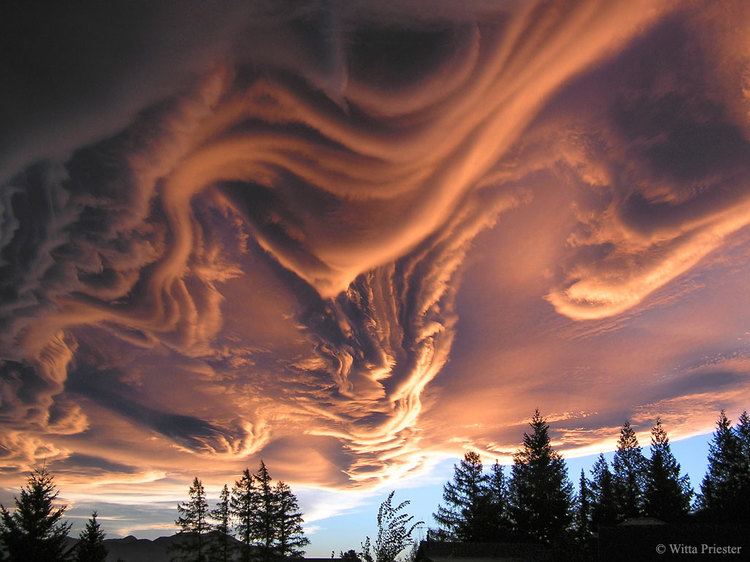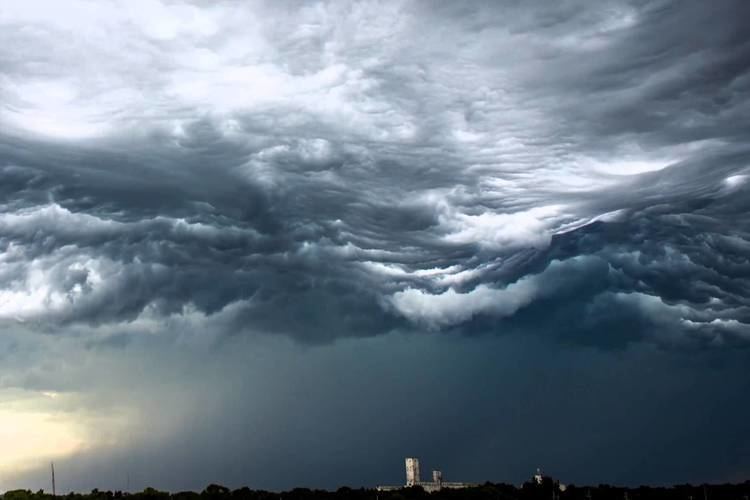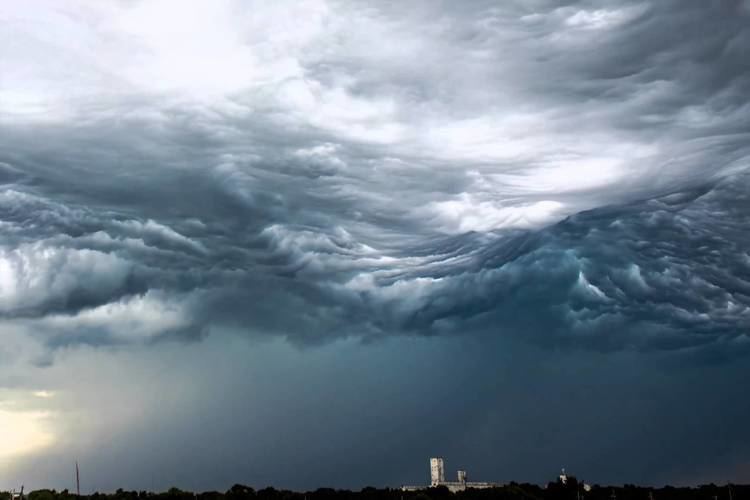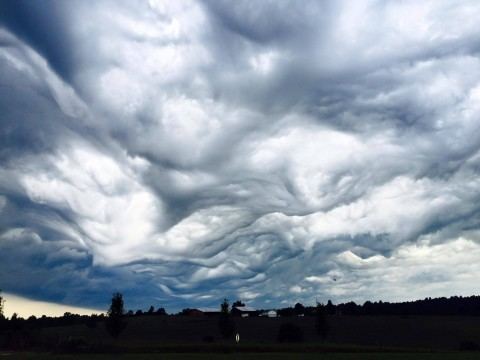Species Asperitas Appearance Wavy undersurface | Variety Unknown | |
Genus Unknown, but examples are likely to be classified as either altocumulus or stratocumulus depending on height as Asperitas is thought to be a cumuliform structure Altitude Below 2,000 (or higher with altocumulus) m(Below 6,000 -or higher with altocumulus- ft) Precipitation cloud? No, but may form near storm clouds. | ||
Asperitas (formerly known as Undulatus asperatus) is a cloud formation, proposed in 2009 as a separate cloud classification by the founder of the Cloud Appreciation Society. If successful it will be the first cloud formation added since cirrus intortus in 1951 to the International Cloud Atlas of the World Meteorological Organization. The name translates approximately as "roughness".

The clouds are most closely related to undulatus clouds. Although they appear dark and storm-like, they tend to dissipate without a storm forming. The ominous-looking clouds have been particularly common in the Plains states of the United States, often during the morning or midday hours following convective thunderstorm activity. As of June 2009 the Royal Meteorological Society is gathering evidence of the type of weather patterns in which asperitas clouds appear, so as to study how they form and decide whether they are distinct from other undulatus clouds.
History of observations
Margaret LeMone, a cloud expert with the National Center for Atmospheric Research has taken photos of asperatus clouds for 30 years, and considers it a likely new cloud type.

On June 20, 2006 Jane Wiggins took a picture of asperatus clouds from the window of a downtown office building in Cedar Rapids, Iowa. In March 2009, Chad Hedstroom took a picture of asperatus clouds from his car near Greenville Ave in Dallas, Texas. Soon after taking it, Wiggins sent her Cedar Rapids image to the Cloud Appreciation Society, which displayed it on its image gallery. Wiggins' photograph was posted on the National Geographic website on June 4, 2009. On July 23, 2013, Janet Salsman photographed them along the South Shore of Nova Scotia, Canada. On October 28, 2013, an Asperitas cloud layer formed over Tuscaloosa, Alabama. On July 7, 2014 asperatus clouds in Lincoln, Nebraska, have been caught on tape by Alex Schueth. One of the most dramatic formations was captured by Witta Priester in New Zealand in 2005. The photo was posted by NASA as the Astronomy Picture of the Day and shows great detail, partly because sunlight illuminates the undulating clouds from the side.

Since 2006, many similar cloud formations have been contributed to the gallery, and in 2009 Gavin Pretor-Pinney, founder of The Cloud Appreciation Society, began working with the Royal Meteorological Society to promote the cloud type.

